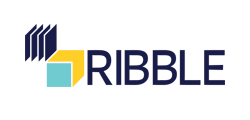Look inside many warehouses and you’ll still see boxes that are far bigger than the products they hold. They’re padded with loose void fill, stacked inefficiently and shipped at inflated rates because carriers charge for space as well as weight. It’s a slow, expensive bleed across procurement, warehousing and transport — and it’s completely avoidable. Right Size packaging shows that less really is more.
Why oversized packaging is quietly expensive
Oversized boxes create costs at every touchpoint. They increase dimensional shipping charges, use more corrugated board than necessary, reduce pallet and racking density, and often mean extra handling. Those “small” inefficiencies compound into meaningful spend for large-volume shippers.
Cut shipping costs by removing wasted space
Carriers bill by volume as well as weight. A box that’s even one size too big can push a parcel into a higher band and multiply costs across thousands of shipments. Right Size packaging reduces that wasted air, lets you fit more units per van or pallet and lowers transport costs per item.
Use less material and reclaim storage space
On-demand, product-fit boxes reduce corrugated use and remove the need to stock dozens of standard sizes. Fewer box sizes, less void fillers and smaller dimensions free up pallet and shelf space so you can store more finished goods in the same footprint and slow the growth of warehousing costs.
Protect products better and cut returns
When products sit tightly in a box, they’re far less likely to shift, even without bulky plastic fillers. Better fitting boxes reduce transit damage, lower return rates and protect brand reputation.
Meet sustainability goals with smarter materials
Right Size packaging pairs naturally with recyclable fanfold corrugated board to reduce waste and reliance on single‑use plastics. Smaller boxes mean fewer lorry trips and less packaging waste overall, helping sustainability targets without compromising performance.
Automation: how on-demand boxes fit into busy packing lines
Making Right Size packaging viable at scale depends on automation. Integrated box-making systems produce single-piece boxes on demand at the pack station, removing box overstock, cutting changeover complexity and delivering consistent, repeatable packaging quality. They’re designed to slot into existing conveyor and packing workflows and scale with throughput.
Real benefits you can measure
- Lower per-parcel transport charges through reduced dimensional weight billing
- Reduced corrugated spend and less void fill in use
- Improved storage density and fewer delivery trips
- Fewer product damages and lower return handling costs
See what Right Size packaging could do for you
If you’re reviewing packaging and want to cut costs, looking to improve warehouse efficiency or aiming to hit sustainability targets, Ribble Packaging can help. Request a free Right Size savings estimate and find out how smaller, smarter boxes can transform your operation.









